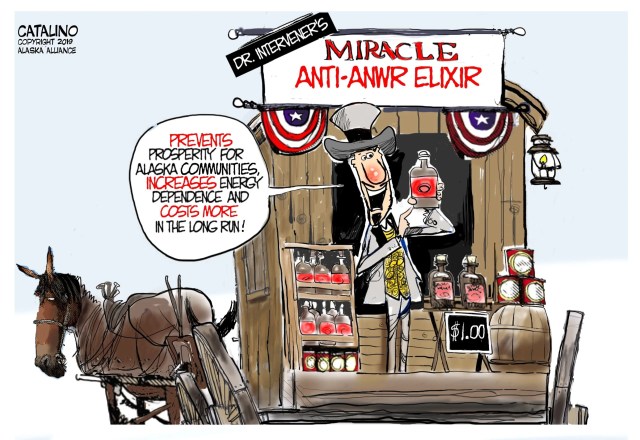
Trump’s ANWR push: Will it really yield much oil?
Heather Richards, E&E News, August 12, 2019
ANWR’s coastal plain also lies in a straight line between successful discoveries in Alaska and successful discoveries in Canada. In the mid-1980s, a group of companies paid for two-dimensional seismic data to map the region’s subsurface potential, revealing a complex spectrum of possible hydrocarbon locations, said David Houseknecht, a geologist for the U.S. Geological Survey and a national expert on the rock lying under ANWR’s coastal plain.
At 7 billion barrels of possible oil to recover — the mean estimate from USGS in a 1998 study — the plain could offer reserves available through conventional drilling at amounts unheard of in today’s oil exploration environment, said Houseknecht.
To get that kind of oil by conventional means — just drilling down and tapping a bathtub full of crude — wildcatters would normally have to look to politically risky regions of the world or in deep waters offshore, like in the Gulf of Mexico, where exploration and production firms are concentrating more of their offshore efforts.
“There are just very few opportunities for companies to explore for billion-barrel oil accumulation,” Houseknecht said.
And though drilling in the far north carries a hefty cost, a larger oil field could offset spending compared to the long, horizontal wells backed up by massive hydraulic fracturing techniques in shale plays like Texas’ Eagle Ford.
Alaska has a lot on the line in ANWR.
Our take: Time to answer the age-old mystery of how much oil sits beneath the surface in ANWR: Drill some wells and find out.
Conservation groups ask DEC to reconsider Palmer Project permits
Claire Stremple, KTOO, August 10, 2019
Constantine Metal Resources cleared several major milestones towards developing a mine at the Palmer Project this year. Among them was getting all the necessary regulatory permits and approvals to expand their exploration operations next year. Conservation groups say the Alaska Department of Environmental Conservation rubber stamped the company’s plans with inadequate data. They are appealing the permit decision.
“There are details of the permit itself that we think are, were really done poorly,” said Gershon Cohen, the Executive Director of Alaska Clean Water Advocacy. He’s among those asking that the permit be sent back to the agency.
“The fact that they would go forward with this permit shows that the agencies are not there for us,” said Cohen.



